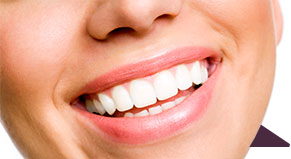February 4th, 2016
 Finding a strange change in your mouth can be scary. You might not know why a mark has appeared, how long it will be there, or what it is. Since it could be a variety of different things, ranging from harmless to more serious, it’s important to visit a dentist or doctor when you find an unfamiliar sore or spot in your mouth.
Finding a strange change in your mouth can be scary. You might not know why a mark has appeared, how long it will be there, or what it is. Since it could be a variety of different things, ranging from harmless to more serious, it’s important to visit a dentist or doctor when you find an unfamiliar sore or spot in your mouth.
In the meantime, you might want to get a better idea of two common but very different types of oral issues that often get confused: mouth cancer and canker sores. Today, our dentists are going to break down the difference between mouth cancer and canker sores so that you can better identify what’s going on in your mouth.
What Mouth Cancer Looks Like
Surprising to many, mouth cancer can grow in your mouth just like it can anywhere else in your body. According to the American Dental Association (ADA), those who use tobacco and/or drink are more likely to develop mouth cancer, as are people over the age of 44 and, more specifically, men. HPV is also the leading cause of cancer at the very back of the mouth and throat (technically known as oropharyngeal cancer).
Mouth cancer typically affects your cheeks, lips, tongue, or throat. It usually shows up as flat, white patches on any of those areas. These patches are made up of cells that can lead to cancer. Mixed red and white patches and bright red patches are also signs of trouble.
Mouth cancer patches can be rough and hard to scrape off. These areas can also be benign, but it’s always important to have a dentist check to make sure.
Mouthcancer.org also notes that painless ulcers, or canker sores, that don’t heal can be a form of mouth cancer. The ADA suggests getting your mouth checked out if signs and symptoms of mouth cancer persist after two weeks.
Finally, cancer in the throat may cause symptoms such as difficult or painful swallowing, a swollen but painless tonsil, an ongoing sore throat or hoarse voice, a painless lump on the outside of your neck that has been there for at least two weeks, and constant coughing, according to the Oral Cancer Foundation.
What Canker Sores Look Like
Unlike mouth cancer, minor canker sores are virtually harmless, except for the annoying discomfort they can cause your mouth. They may be caused by several things, including stress, hormonal shifts, food sensitivities, and toothpaste, according to the Mayo Clinic.
The defining difference between canker sores and mouth cancer is pain. Canker sores can be extremely painful. Thankfully, the pain tends to lessen over a few days, and the sore usually heals up by itself within two weeks.
Canker sores also look different than patchy mouth cancer. A canker sore looks like an ulcer or sore. They are typically round with a depressed center and may appear to be white, grey or yellow. The outer rim of the canker sore is typically red.
If you have a canker sore that doesn’t heal within three weeks, you should see a dentist, according to DentalHealth.org. Mouth cancer can appear in the form of an ulcer.
Do you have a sore you would like us to take a look at in Chicago? Contact Water Tower Dental Care! We’re experts on identifying mouth cancer vs. canker sores.
Tags: alcohol, canker sore, canker sores, cheeks, HPV, lips, mouth cancer, mouth patch, mouth patches, mouth ulcer, red and white patch, red patch, smoking, throat, tongue, ulcer, white patch
Posted in Chew On This | No Comments
July 23rd, 2015
 With long sunny days outdoors and exotic vacations, ‘tis the season for love. And with love comes lots of smooching! When you’re in the moment with your loved one, we’re guessing that you aren’t thinking about how your kisses are affecting your mouth. Interestingly though, kisses really do impact your oral health, both positively and negatively. Our experts are here to tell you how exactly kissing does this with juicy detail. We’ll start with the bad news first.
With long sunny days outdoors and exotic vacations, ‘tis the season for love. And with love comes lots of smooching! When you’re in the moment with your loved one, we’re guessing that you aren’t thinking about how your kisses are affecting your mouth. Interestingly though, kisses really do impact your oral health, both positively and negatively. Our experts are here to tell you how exactly kissing does this with juicy detail. We’ll start with the bad news first.
The Ugly Oral Health Side to Kissing
Unfortunately, kissing can cause some bad stuff to go on in your mouth. Let’s take a look at a couple of the most common ways kissing can go wrong.
You can get herpes from kissing. You don’t need to go any further than kissing to catch an STD. Herpes infection viruses can be spread through your saliva, causing cold sores or blisters on your lips, around your mouth or even inside your mouth. Though they are typically harmless, they can get pretty annoying. Worst of all, there’s no cure. So be careful who you kiss!
Bad bacteria can increase your chance of developing gum disease. If your kissing partner has gum disease, or periodontitis, you’re getting their bad bacteria inside your mouth when you kiss. In fact, you’re sharing around 80 million bacteria with them! The worse the bacteria in their mouth are, the worse it will affect your mouth.
Don’t let these two issues scare you away from kissing. As long as you and your partner take care of your mouth and teeth, and communicate any oral diseases that you have, you shouldn’t be surprised with any unhealthy oral developments. In fact, kissing is typically great for your oral health, as you’ll see below.
Healthy Kissing is Good for Your Teeth, Gums and Mouth!
Your dentist orders you to keep kissing your partner! Well, as long as they have good oral health. Here’s why:
More saliva means fewer cavities. While you’re kissing, your salivary glands begin producing more saliva. Saliva is made up of water, electrolytes, mucus, glycoproteins, enzymes and antibacterial compounds that do lots of good things, including neutralize acids in your mouth, fight off bacteria and wash away food particles. All of these changes will lead to less tooth erosion, which means your dentist should find less cavities in your teeth.
Saliva protects your tooth enamel. Saliva is amazing. Along with fighting off bacteria and acids, the mineral salts in your saliva help rebuild the minerals in your tooth enamel, protecting your teeth from erosion and cavities.
More salvia means healthier cheeks and gums. Your gums and cheeks typically heal more quickly than your skin thanks to your saliva. According to Discover Magazine, proteins like vascular endothelial growth factor help to trigger the formation of blood vessels, which boosts your mouth’s healing processes.
Sharing kisses boosts your immune system. During a quick, 10-second kiss, you transfer as much as 80 million bacteria to your partner. But don’t let that stop you from smooching. It’s actually good for you! According to a study from the Netherlands Organisation for Applied Scientific Research, sharing these bacteria during a kiss boosts your immune system, keeping you healthy.
So there you have it! You have our approval to keep kissing a healthy mouth all summer long. If you or your partner needs a cleanup before a smooch session, feel free to stop by Water Tower Dental Care on Chicago’s Magnificent Mile! We’ll not only make your mouth sparkling clean, but we’ll also make sure it looks picture perfect for your partner with our cosmetic dentistry treatments.
Tags: cavities, cheeks, enamel, gum disease, gums, kissing, mouth, oral health, oral herpes, saliva, STD, teeth, tooth erosion
Posted in Chew On This | No Comments
 Finding a strange change in your mouth can be scary. You might not know why a mark has appeared, how long it will be there, or what it is. Since it could be a variety of different things, ranging from harmless to more serious, it’s important to visit a dentist or doctor when you find an unfamiliar sore or spot in your mouth.
Finding a strange change in your mouth can be scary. You might not know why a mark has appeared, how long it will be there, or what it is. Since it could be a variety of different things, ranging from harmless to more serious, it’s important to visit a dentist or doctor when you find an unfamiliar sore or spot in your mouth.
 With long sunny days outdoors and exotic vacations, ‘tis the season for love. And with love comes lots of smooching! When you’re in the moment with your loved one, we’re guessing that you aren’t thinking about how your kisses are affecting your mouth. Interestingly though, kisses really do impact your oral health, both positively and negatively. Our experts are here to tell you how exactly kissing does this with juicy detail. We’ll start with the bad news first.
With long sunny days outdoors and exotic vacations, ‘tis the season for love. And with love comes lots of smooching! When you’re in the moment with your loved one, we’re guessing that you aren’t thinking about how your kisses are affecting your mouth. Interestingly though, kisses really do impact your oral health, both positively and negatively. Our experts are here to tell you how exactly kissing does this with juicy detail. We’ll start with the bad news first.




 Website Powered by Sesame 24-7™
Website Powered by Sesame 24-7™